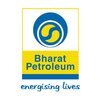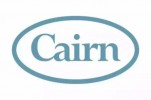Filter interviews by
GAIL Mechanical Technician Interview Questions and Answers
GAIL Mechanical Technician Interview Experiences
1 interview found

(2 Questions)
- Q1. About Instrument and parameters
- Q2. Fluid mechanics
General questions about tools and fire equipment, case handling
(2 Questions)
- Q1. About Excel, office word, internet and hardware
- Q2. Short key, lettertyping, printer
Top trending discussions






Interview questions from similar companies

I applied via Recruitment Consulltant
(2 Questions)
- Q1. I am electrical technician Offshor returner
- Q2. Diploma 12th
(1 Question)
- Q1. To

Mechanical Technician Interview Questions & Answers
Bharat Petroleumposted on 26 May 2018
Interview Preparation Tips
Experience: aptitude reasoning and base techanical.
Round: Group Discussion
Experience: techanical core branch.

Mechanical Technician Interview Questions & Answers
Bharat Petroleumposted on 30 Mar 2024
(1 Question)
- Q1. Technical and type off pump valve and any machine repair and assembly
(2 Questions)
- Q1. General information
- Q2. General technical and family background
(1 Question)
- Q1. Documents verification

I applied via Recruitment Consultant and was interviewed in Dec 2020. There were 6 interview rounds.
Interview Questionnaire
2 Questions
- Q1. 1st round is technical , 2nd is values & behaviors , 3rd is assessment road
- Q2. Be clear on values & behaviours , practice assement round offline before attempting
Interview Preparation Tips

I applied via Naukri.com and was interviewed in Nov 2019. There were 3 interview rounds.
Interview Questionnaire
5 Questions
- Q1. Tell me about your previous job ?
- Q2. What is deference between RS 485 and RS 232
- Ans.
RS 485 is a multi-point communication standard while RS 232 is a point-to-point communication standard.
RS 485 supports up to 32 devices on a single bus while RS 232 only supports two devices.
RS 485 uses differential signaling for noise immunity while RS 232 uses single-ended signaling.
RS 485 can transmit data over longer distances than RS 232.
RS 485 is commonly used in industrial automation and control systems while RS
- Q3. What is protocol?
- Ans.
Protocol is a set of rules and guidelines that govern the communication between devices or systems.
Protocols ensure that devices or systems can communicate with each other effectively and efficiently.
They define the format, timing, sequencing, and error checking of messages exchanged between devices or systems.
Examples of protocols include TCP/IP, HTTP, FTP, and SMTP.
Protocols can be implemented in hardware, software, ...
- Q4. What is PLC?
- Ans.
PLC stands for Programmable Logic Controller. It is a digital computer used for automation of electromechanical processes.
PLC is used in industrial automation to control machinery and processes.
It is programmed using ladder logic or other programming languages.
PLC can be used in various applications such as manufacturing, transportation, and energy.
Examples of PLC brands include Siemens, Allen-Bradley, and Mitsubishi.
P...
- Q5. How many types of PLC?
- Ans.
There are several types of PLCs, including modular, compact, rack-mounted, and software-based PLCs.
Modular PLCs are designed to be expandable and customizable.
Compact PLCs are smaller and more cost-effective than modular PLCs.
Rack-mounted PLCs are designed to be mounted in a standard equipment rack.
Software-based PLCs run on a computer and use specialized software to emulate a physical PLC.
Other types of PLCs include s...
Interview Preparation Tips
* Should be 2 year experience in electronics and automation related., Communication, PLC etc.
Skills evaluated in this interview

I applied via Recruitment Consulltant and was interviewed before Jun 2021. There were 6 interview rounds.

(6 Questions)
- Q1. Explain your self and where did you working current in 2014
- Q2. Which gas can use for while hot/live tapping
- Ans.
Nitrogen gas is commonly used for hot/live tapping in mechanical engineering.
Nitrogen gas is inert and non-reactive, making it safe to use in hot/live tapping processes.
It helps to create a protective atmosphere to prevent explosions or fires.
Nitrogen gas is readily available and cost-effective.
Other gases like argon or carbon dioxide can also be used depending on the specific requirements.
- Q3. Which method can we follow for railway/road/river crossings
- Ans.
Various methods can be used for railway/road/river crossings depending on the location and other factors.
Bridges can be built over the crossing
Tunnels can be dug under the crossing
Level crossings can be used for roads
Flyovers can be constructed for roads
Ferries can be used for river crossings
Aqueducts can be built for waterways
Location, traffic volume, and safety considerations must be taken into account when choosing
- Q4. Which procedure can follow for pipe lines welding while route and filling
- Ans.
The procedure for pipe lines welding while route and filling involves several steps.
Clean the area to be welded thoroughly
Tack weld the pipes together
Weld the root pass
Fill the remaining gap with weld metal
Perform post-weld heat treatment if required
Inspect the weld for defects
- Q5. Cross country pipeline code - Nitrogen
- Q6. Explain About RT, UT, and magnetic partials
- Ans.
RT, UT, and magnetic partials are non-destructive testing methods used in engineering.
RT stands for Radiographic Testing and uses X-rays or gamma rays to inspect the internal structure of a material.
UT stands for Ultrasonic Testing and uses high-frequency sound waves to detect flaws or defects in a material.
Magnetic particle testing uses magnetic fields and iron particles to detect surface and slightly subsurface defec...
What IS API 5L
What is ASME B 16.5
What is ASME IX
Whatbis ASME B 31.4
Interview Preparation Tips
- ASME, API, ASTM, ANSI,
Even I attended in Chennai for other company but they call me for as a Project manager interview and they ask me questions in design, fabrication and supply time management. Then it's confirmed that post they already reserved for some others. If they reserve already they should not call for interveiw.

I applied via Naukri.com and was interviewed in Oct 2020. There were 3 interview rounds.
Interview Questionnaire
1 Question
- Q1. The HR round was very pathetic. Sreethala took my HR round.
Interview Preparation Tips
Mumbai location. They will take all the interview rounds. The HR will ask you to submit all documents and last moment they will cancel your candidature without giving you any specific reason.

I applied via Naukri.com and was interviewed before Jun 2020. There was 1 interview round.
Interview Questionnaire
28 Questions
- Q1. What is mean by safety
- Ans.
Safety refers to the condition of being protected from harm, danger, or injury.
Safety involves taking measures to prevent accidents and injuries
It includes following rules and regulations to ensure a safe environment
Safety can be achieved through proper training and education
Examples of safety measures include wearing protective gear, using safety equipment, and practicing safe behaviors
Safety is important in all indus...
- Q2. What is LEL
- Ans.
LEL stands for Lower Explosive Limit and is the minimum concentration of a gas or vapor in air that can ignite.
LEL is a safety term used in industries dealing with flammable gases and liquids.
It is expressed as a percentage of the gas or vapor in air.
If the concentration of the gas or vapor is below the LEL, it is too lean to ignite.
If the concentration is above the LEL, it is too rich and can ignite.
For example, the L...
- Q3. What is RA
- Q4. What is JSA/JHA
- Ans.
JSA/JHA stands for Job Safety Analysis/Job Hazard Analysis. It is a process of identifying potential hazards and risks in a job or task.
JSA/JHA is a systematic approach to identify and mitigate potential hazards in a job or task
It involves breaking down a job or task into steps and analyzing each step for potential hazards
The analysis includes identifying the hazards, assessing the risks, and implementing controls to m...
- Q5. Role of HSE
- Ans.
HSE plays a crucial role in ensuring the safety and well-being of employees and the environment.
HSE stands for Health, Safety, and Environment.
It involves identifying and assessing potential hazards and implementing measures to control or eliminate them.
HSE also includes training employees on safety procedures and emergency response plans.
Examples of HSE measures include wearing personal protective equipment, conductin...
- Q6. What is Hchem
- Ans.
Hchem is not a known term or acronym in the engineering field.
Hchem is not a commonly used term in engineering
It is possible that the interviewer misspoke or meant to ask a different question
Without more context, it is difficult to provide a more specific answer
- Q7. What is Hazop
- Ans.
Hazop is a structured and systematic technique used to identify potential hazards and operability problems in industrial processes.
Hazop stands for Hazard and Operability Study
It involves a team of experts analyzing a process to identify potential hazards and operability issues
Hazop is commonly used in the chemical, oil and gas, and pharmaceutical industries
The process involves breaking down the process into smaller pa...
- Q8. What is confined space
- Ans.
Confined space refers to an area that is enclosed and has limited access and ventilation.
Examples include tanks, silos, sewers, and tunnels.
Workers entering confined spaces must follow safety protocols and use specialized equipment.
Hazards in confined spaces include lack of oxygen, toxic gases, and physical obstructions.
Proper training and communication are crucial for working in confined spaces.
- Q9. What is work at height
- Ans.
Work at height refers to any task performed at a height where a person could fall and injure themselves.
Work at height involves working on ladders, scaffolding, roofs, or any other elevated surface
It is important to use appropriate safety equipment such as harnesses, guardrails, and safety nets
Workers should be trained on how to safely work at height and how to properly use safety equipment
Examples of work at height in...
- Q10. Hazard of confined space
- Ans.
Confined spaces pose a significant hazard due to limited entry and exit points, poor ventilation, and potential for hazardous substances.
Limited entry and exit points can make it difficult to escape in case of an emergency
Poor ventilation can lead to a buildup of toxic gases or lack of oxygen
Potential for hazardous substances such as chemicals, fumes, or dust
Examples include tanks, silos, sewers, and tunnels
Proper trai...
- Q11. Precautions of confined space
- Ans.
Precautions to be taken while working in confined spaces
Proper ventilation and air quality testing
Use of personal protective equipment
Proper lighting and communication equipment
Training and certification for workers
Emergency rescue plan in place
- Q12. What is LEL&UEL
- Ans.
LEL&UEL stands for Lower Explosive Limit and Upper Explosive Limit respectively. They are the minimum and maximum concentrations of a flammable gas or vapor in air that can ignite.
LEL is the lowest concentration of a gas or vapor that can ignite
UEL is the highest concentration of a gas or vapor that can ignite
Concentrations between LEL and UEL are considered flammable
LEL and UEL vary depending on the gas or vapor
LEL an...
- Q13. What is competent person
- Q14. What is fire
- Ans.
Fire is a chemical reaction that releases heat, light, and various gases.
Fire is a rapid oxidation process that occurs when fuel (such as wood, paper, or gasoline) combines with oxygen in the presence of heat or a spark.
It releases heat, light, and various gases such as carbon dioxide, water vapor, and nitrogen oxides.
Fire can be beneficial (such as for cooking or heating) or destructive (such as in wildfires or house ...
- Q15. Types of fire
- Ans.
There are four types of fire: Class A, Class B, Class C, and Class D.
Class A fires involve ordinary combustibles such as wood, paper, or cloth.
Class B fires involve flammable liquids or gases such as gasoline, oil, or propane.
Class C fires involve electrical equipment such as appliances, wiring, or circuit breakers.
Class D fires involve combustible metals such as magnesium, titanium, or sodium.
- Q16. Type of extinguisher
- Ans.
There are different types of fire extinguishers for different types of fires.
Water extinguishers for Class A fires (wood, paper, cloth, etc.)
CO2 extinguishers for Class B and C fires (flammable liquids and electrical fires)
Dry chemical extinguishers for Class A, B, and C fires
Foam extinguishers for Class A and B fires
Wet chemical extinguishers for Class K fires (cooking oils and fats)
- Q17. Modes of heat transfer
- Ans.
Modes of heat transfer include conduction, convection, and radiation.
Conduction is the transfer of heat through a material without any movement of the material itself.
Convection is the transfer of heat through the movement of fluids, such as air or water.
Radiation is the transfer of heat through electromagnetic waves, such as from the sun or a fire.
- Q18. How to prevent fire
- Ans.
Preventing fire requires proper handling of flammable materials and regular maintenance of electrical equipment.
Store flammable materials in designated areas away from heat sources
Regularly inspect and maintain electrical equipment
Install smoke detectors and fire extinguishers in appropriate locations
Train employees on fire safety procedures and evacuation plans
- Q19. What is msds
- Ans.
MSDS stands for Material Safety Data Sheet.
MSDS provides information about hazardous chemicals and substances.
It includes information about the physical and chemical properties of the substance, health hazards, precautions for safe handling and use, and emergency procedures.
MSDS is required by law for all hazardous chemicals and substances used in the workplace.
It is important to read and understand the MSDS before usi...
- Q20. How to do firefighting
- Ans.
Firefighting involves identifying and extinguishing fires to prevent damage and loss of life.
Assess the situation and determine the type and size of fire
Use appropriate firefighting equipment such as fire extinguishers, hoses, and pumps
Follow safety protocols and wear protective gear
Coordinate with other firefighters and emergency responders
Evacuate people from the affected area
Monitor the situation and ensure the fire
- Q21. How to prevent the accident
- Ans.
Prevent accidents by identifying potential hazards and implementing safety measures.
Conduct regular safety audits and risk assessments
Provide proper training and education to employees
Implement safety protocols and procedures
Use appropriate safety equipment and gear
Encourage a culture of safety and accountability
Regularly review and update safety policies and procedures
- Q22. How to investigate the accident
- Ans.
To investigate an accident, follow a systematic approach involving data collection, analysis, and identification of root causes.
Gather all available information about the accident, including eyewitness accounts, photographs, and any relevant documents or records.
Conduct interviews with individuals involved in the accident to gather their perspectives and insights.
Examine the accident scene for physical evidence, such a...
- Q23. Emergency procedure
- Q24. What is H2s
- Ans.
H2S is a colorless, flammable, and toxic gas with a strong odor of rotten eggs.
H2S is commonly known as hydrogen sulfide.
It is produced naturally by the breakdown of organic matter and is found in natural gas, crude oil, and volcanic gases.
It is highly toxic and can cause respiratory failure, loss of consciousness, and even death.
H2S is used in various industries such as oil and gas, mining, and pulp and paper.
It is al...
- Q25. Properties of H2s
- Ans.
H2S is a colorless, flammable, and toxic gas with a strong odor of rotten eggs.
H2S is highly flammable and can ignite easily
It is toxic and can cause respiratory failure
It has a distinctive odor of rotten eggs
H2S is used in the production of sulfuric acid and in the petroleum industry
- Q26. Hirerchy procedure
- Q27. Permissible exposure limit of H2s,co,co2,methane
- Ans.
Permissible exposure limits (PEL) are the maximum allowable concentrations of hazardous substances in the workplace.
H2S: PEL is 10 ppm (parts per million) over an 8-hour workday
CO: PEL is 50 ppm over an 8-hour workday
CO2: No specific PEL, but recommended exposure limit is 5,000 ppm over an 8-hour workday
Methane: No specific PEL, but recommended exposure limit is 1,000 ppm over an 8-hour workday
- Q28. Short term exposure limit of H2s
- Ans.
Short term exposure limit (STEL) of H2S is 10 ppm.
STEL is the maximum concentration of a substance that a worker can be exposed to for a short period of time without suffering from immediate or long-term health effects.
The STEL for H2S is set at 10 ppm (parts per million) by OSHA (Occupational Safety and Health Administration).
Exposure to H2S at levels above the STEL can cause symptoms such as eye irritation, headache,...
Interview Preparation Tips

I applied via Naukri.com and was interviewed before Oct 2017. There was 0 interview round.
Interview Preparation Tips
Skills: Communication, Body Language, Problem Solving
Duration: 1-4 weeks
GAIL Interview FAQs
Tell us how to improve this page.
GAIL Interviews By Designations
- GAIL Electrical Engineer Interview Questions
- GAIL Electrical Technician Interview Questions
- GAIL Graduate Apprentice Interview Questions
- GAIL Senior Engineer Mechanical Interview Questions
- GAIL Senior Engineer Interview Questions
- GAIL Executive Trainee Interview Questions
- GAIL Graduate Apprenticeship Trainee Interview Questions
- GAIL Apprentice Trainee Interview Questions
- Show more
Interview Questions for Popular Designations
- Mechanical Engineer Interview Questions
- Diploma Mechanical Engineer Interview Questions
- Mechanical Maintenance Engineer Interview Questions
- Senior Engineer Mechanical Interview Questions
- Mechanical Fitter Interview Questions
- Mechanical Maintenance Fitter Interview Questions
- Mechanical Supervisor Interview Questions
- Mechanical Foreman Interview Questions
- Show more
GAIL Mechanical Technician Interview Process
based on 1 interview
Interview experience
Interview Questions from Similar Companies
Fast track your campus placements
GAIL Mechanical Technician Reviews and Ratings
based on 5 reviews
Rating in categories
|
Field Operator
113
salaries
| ₹1.8 L/yr - ₹6 L/yr |
|
Graduate Apprentice Trainee
99
salaries
| ₹2.4 L/yr - ₹3 L/yr |
|
Senior Engineer
63
salaries
| ₹10.5 L/yr - ₹24 L/yr |
|
Technician
62
salaries
| ₹1.3 L/yr - ₹4 L/yr |
|
Senior Officer
59
salaries
| ₹13 L/yr - ₹30 L/yr |

Indian Oil Corporation

Hindustan Petroleum

Petrofac

Saudi Aramco
- Home >
- Interviews >
- GAIL Interview Questions >
- GAIL Mechanical Technician Interview Questions












